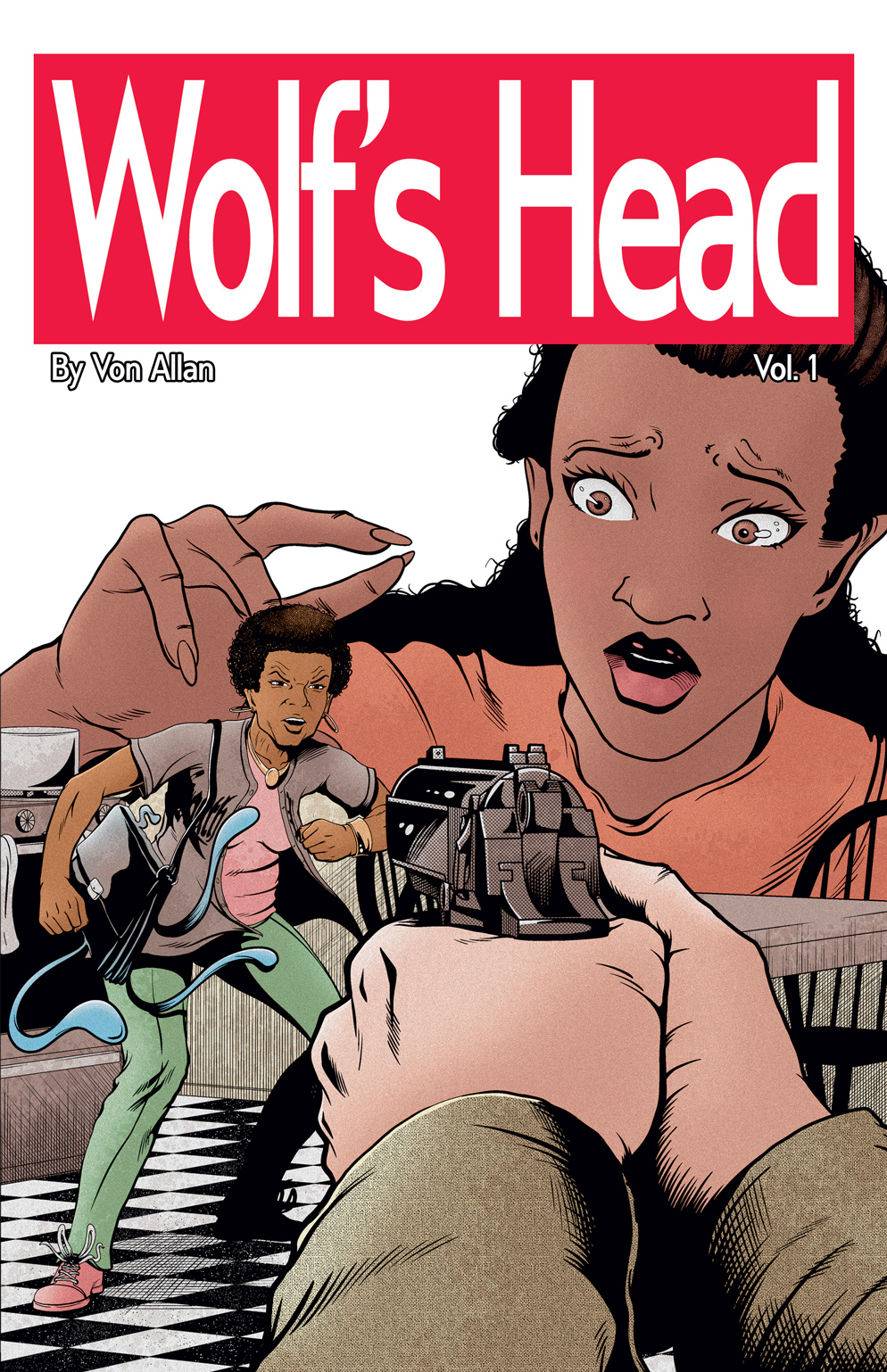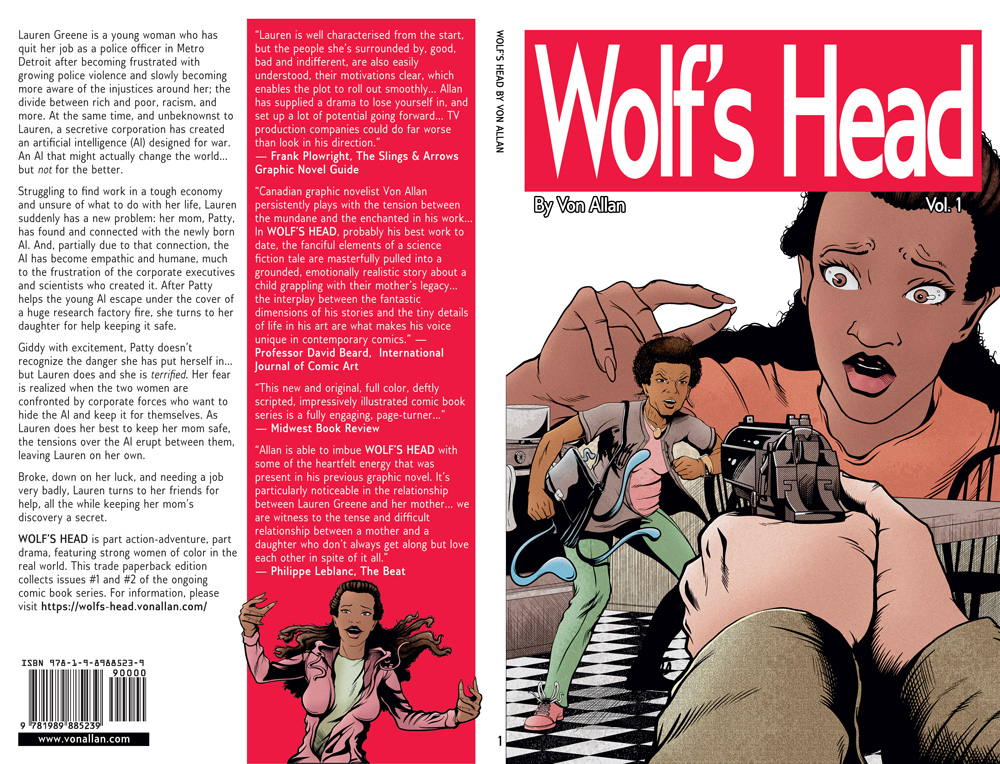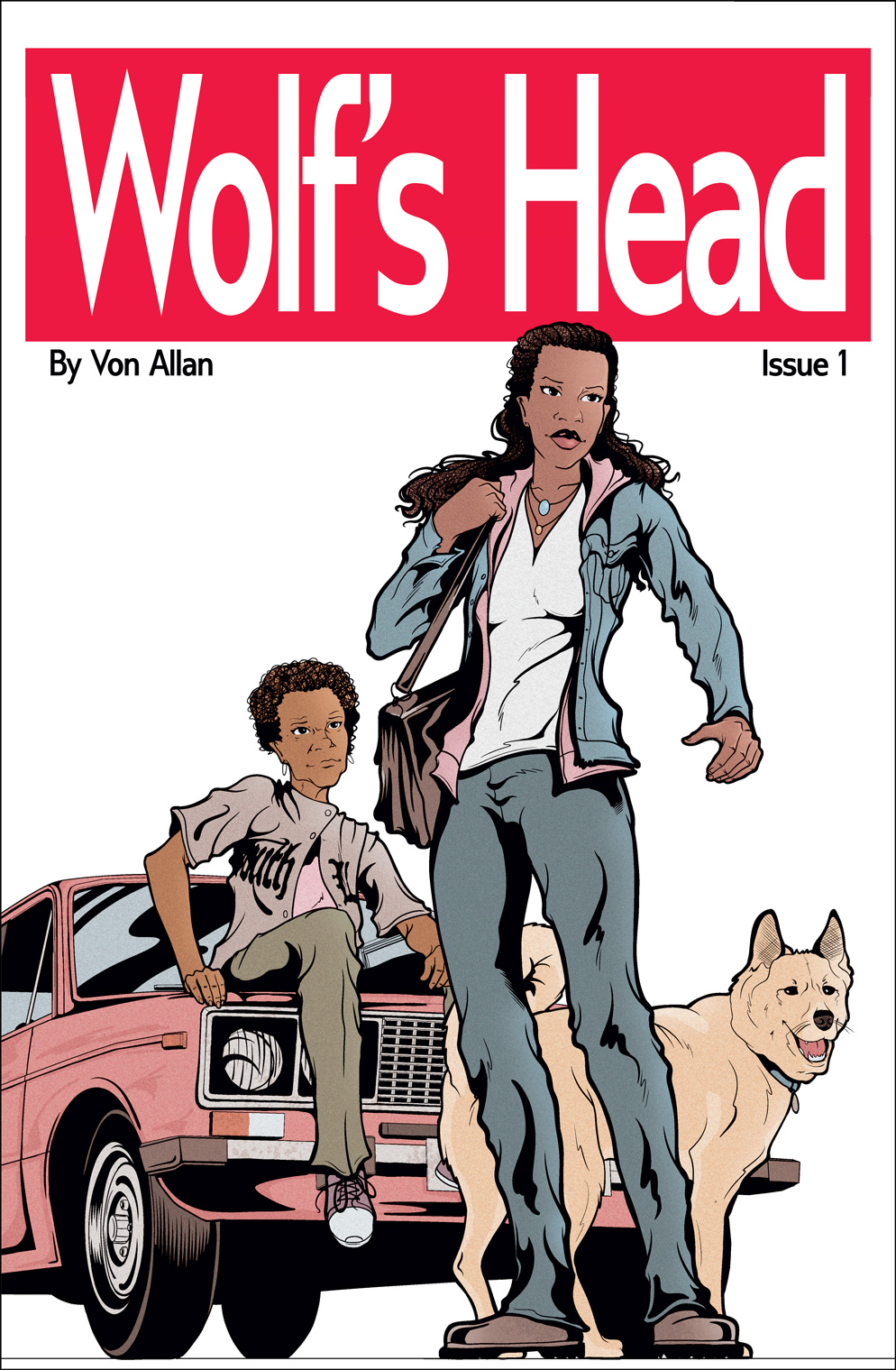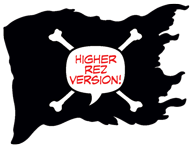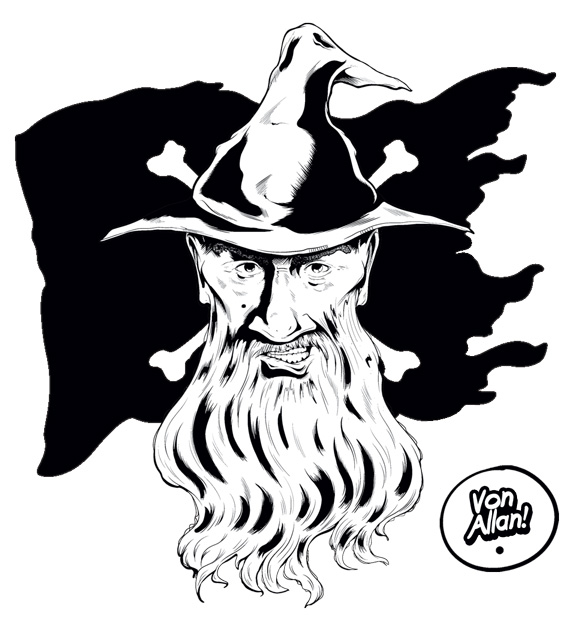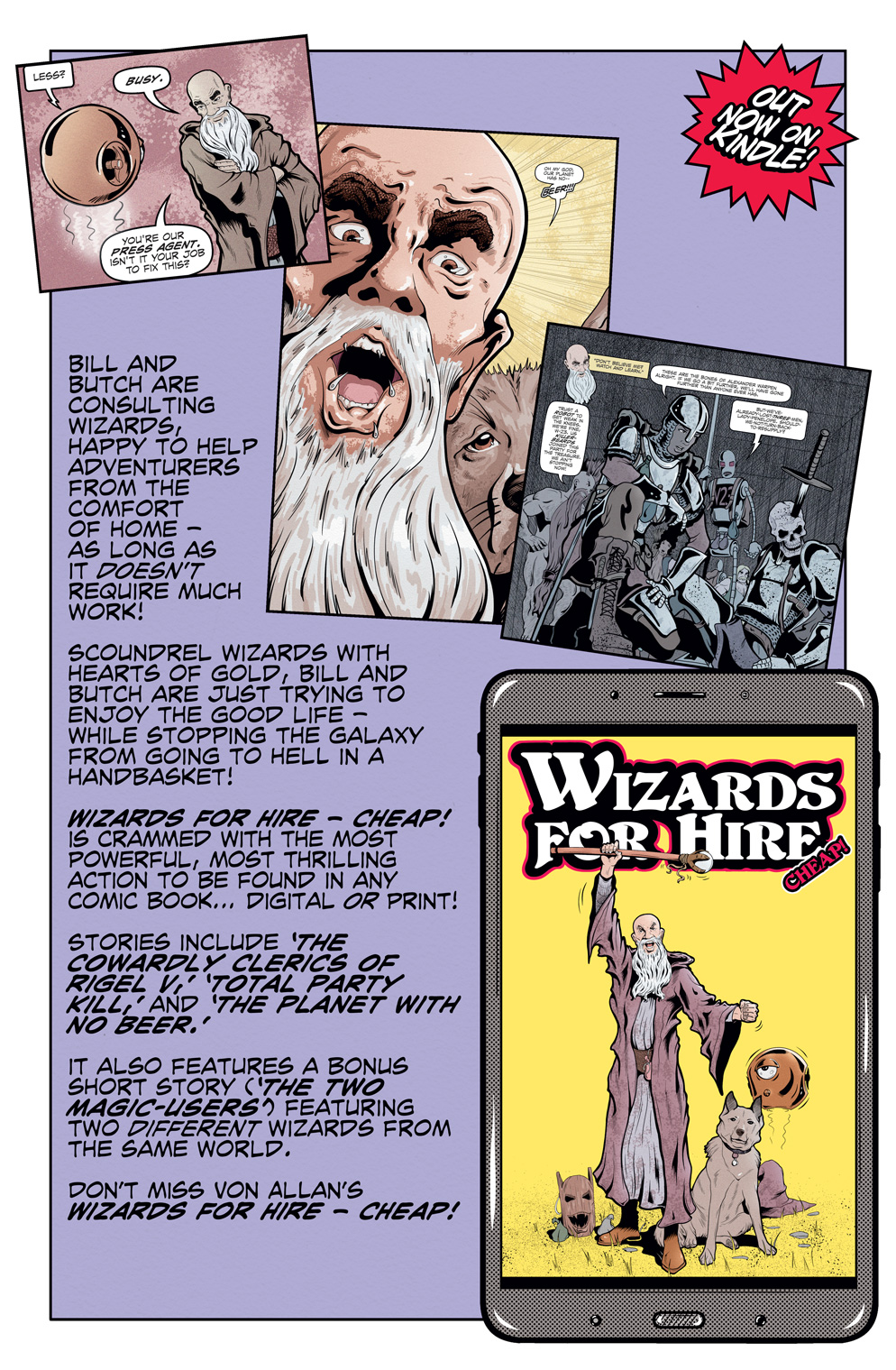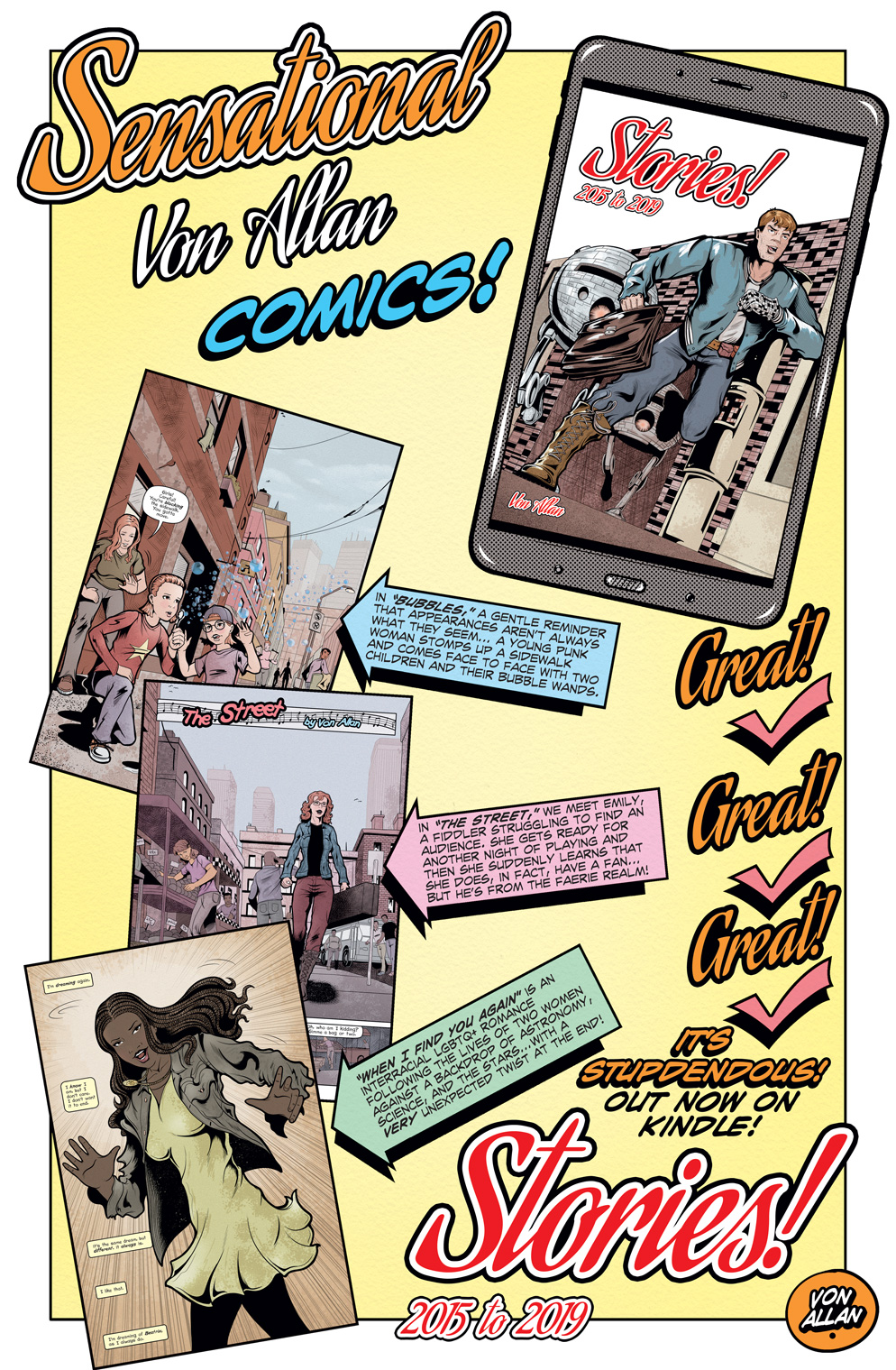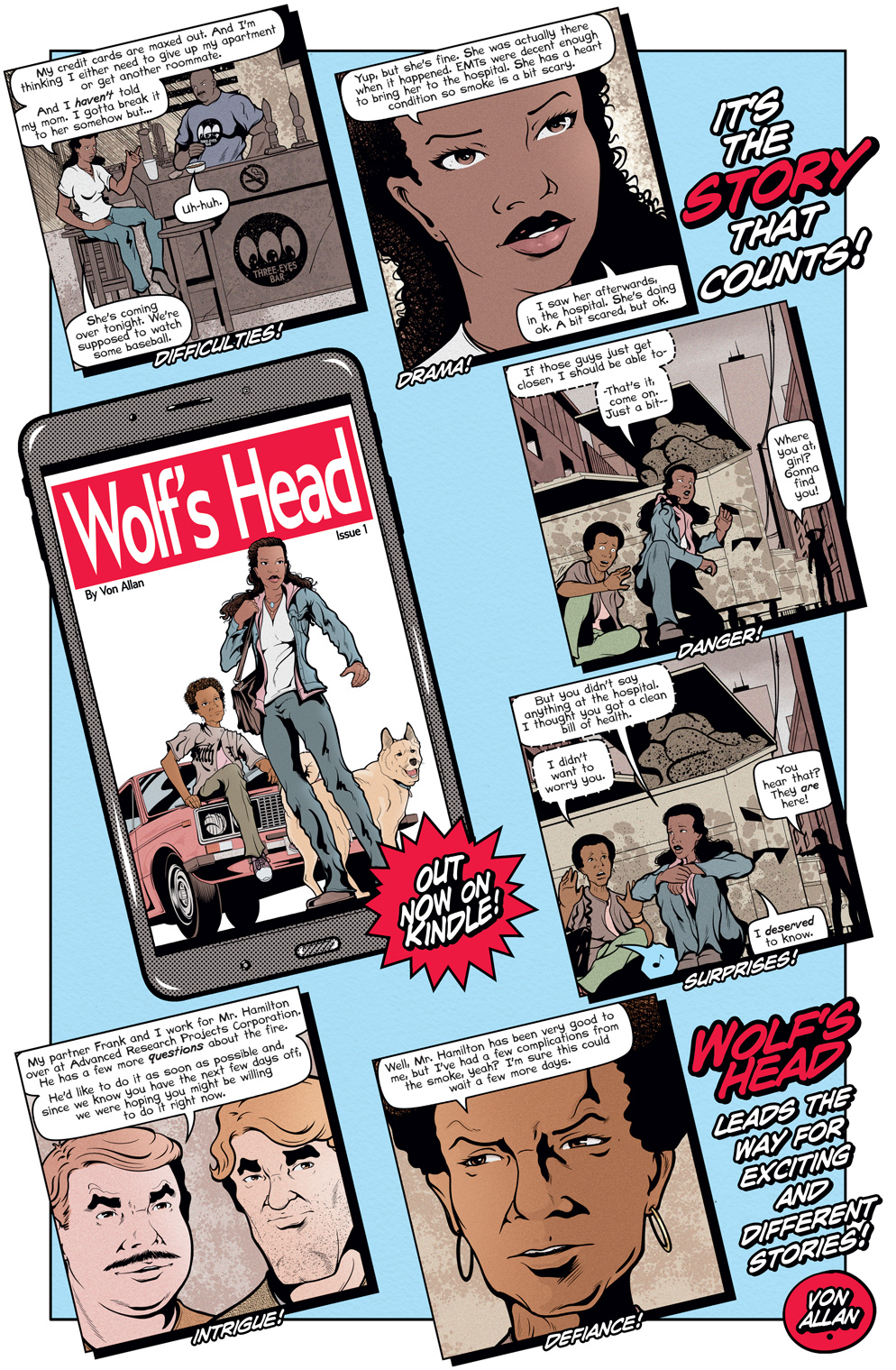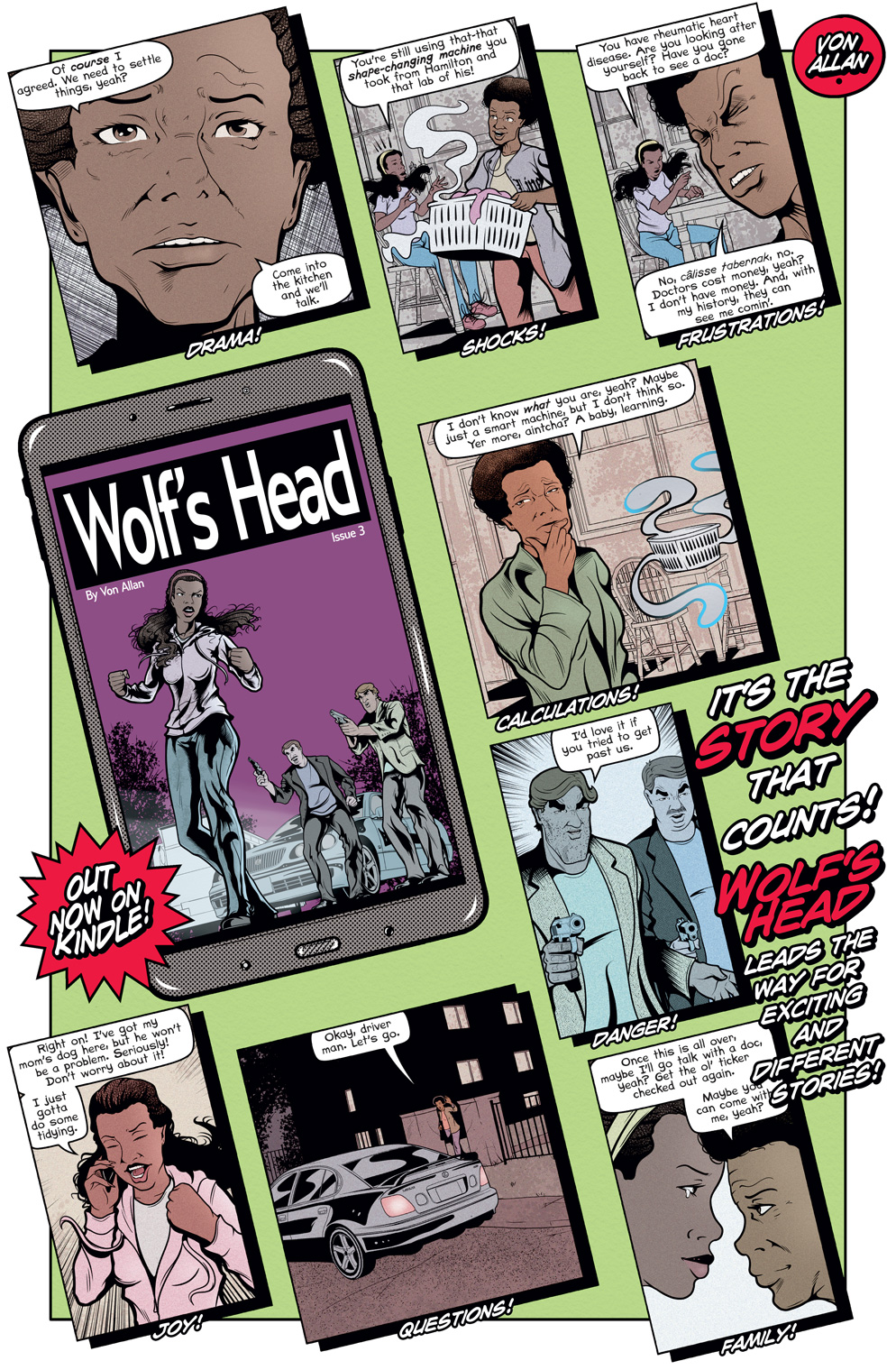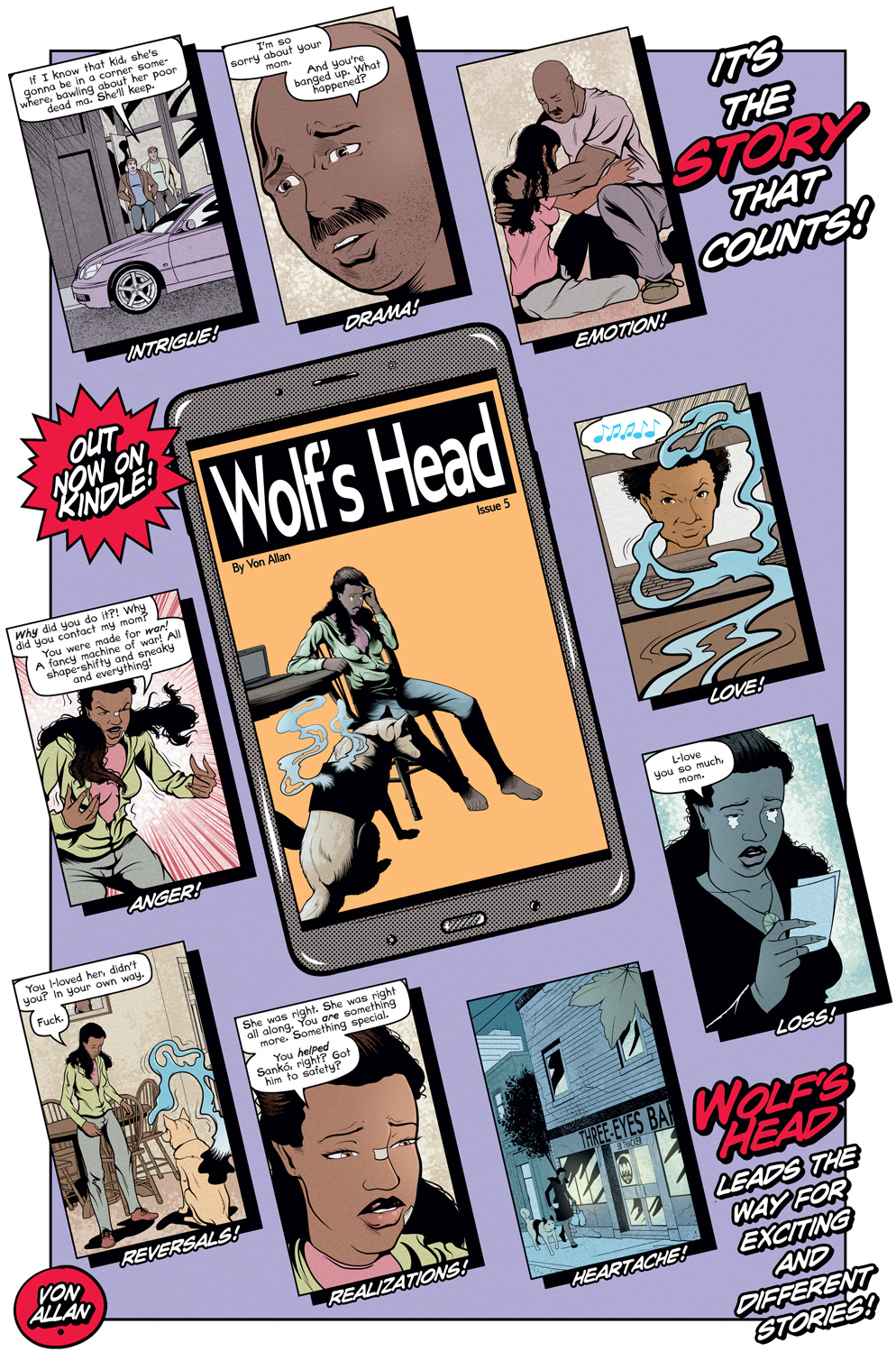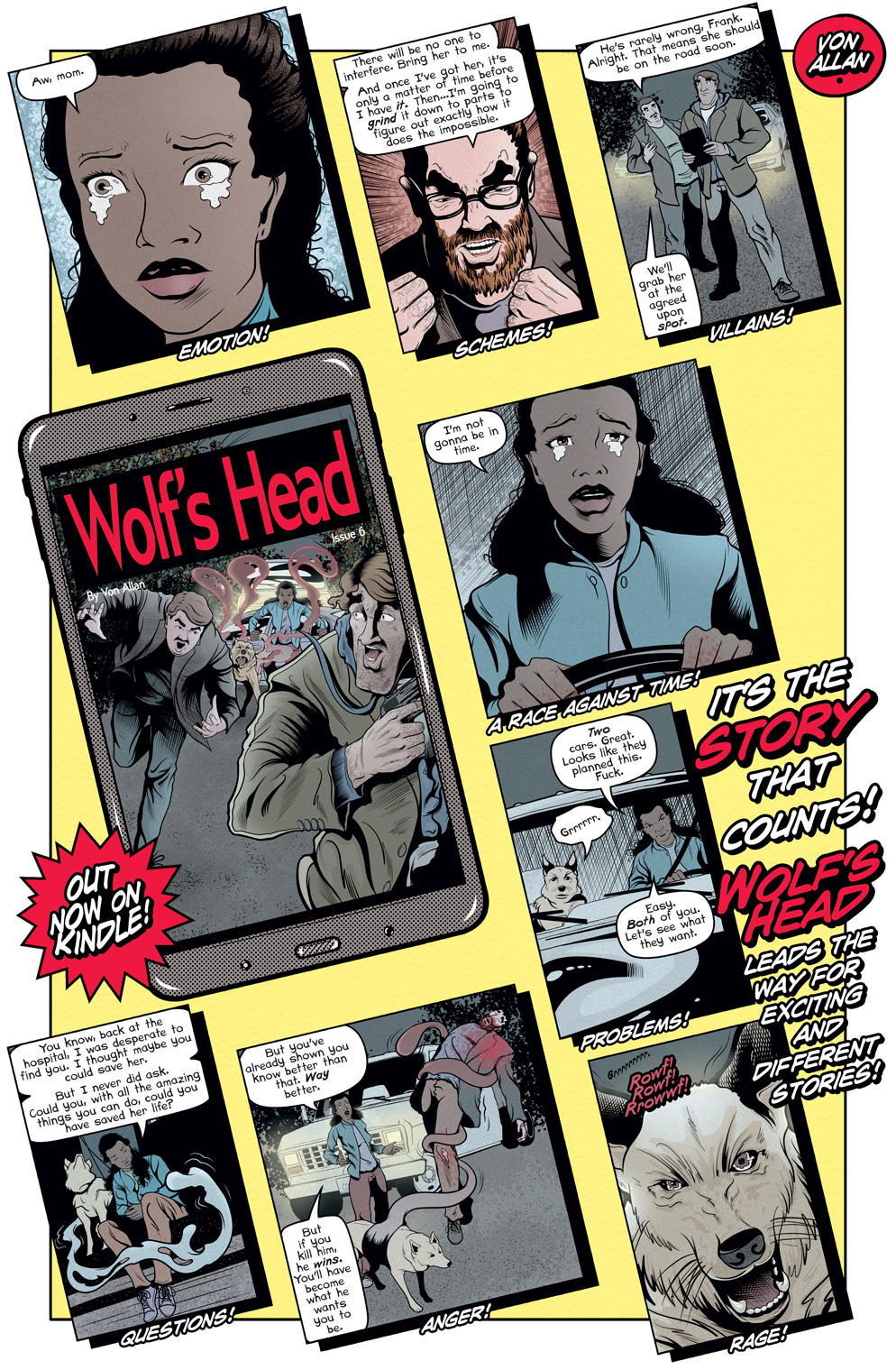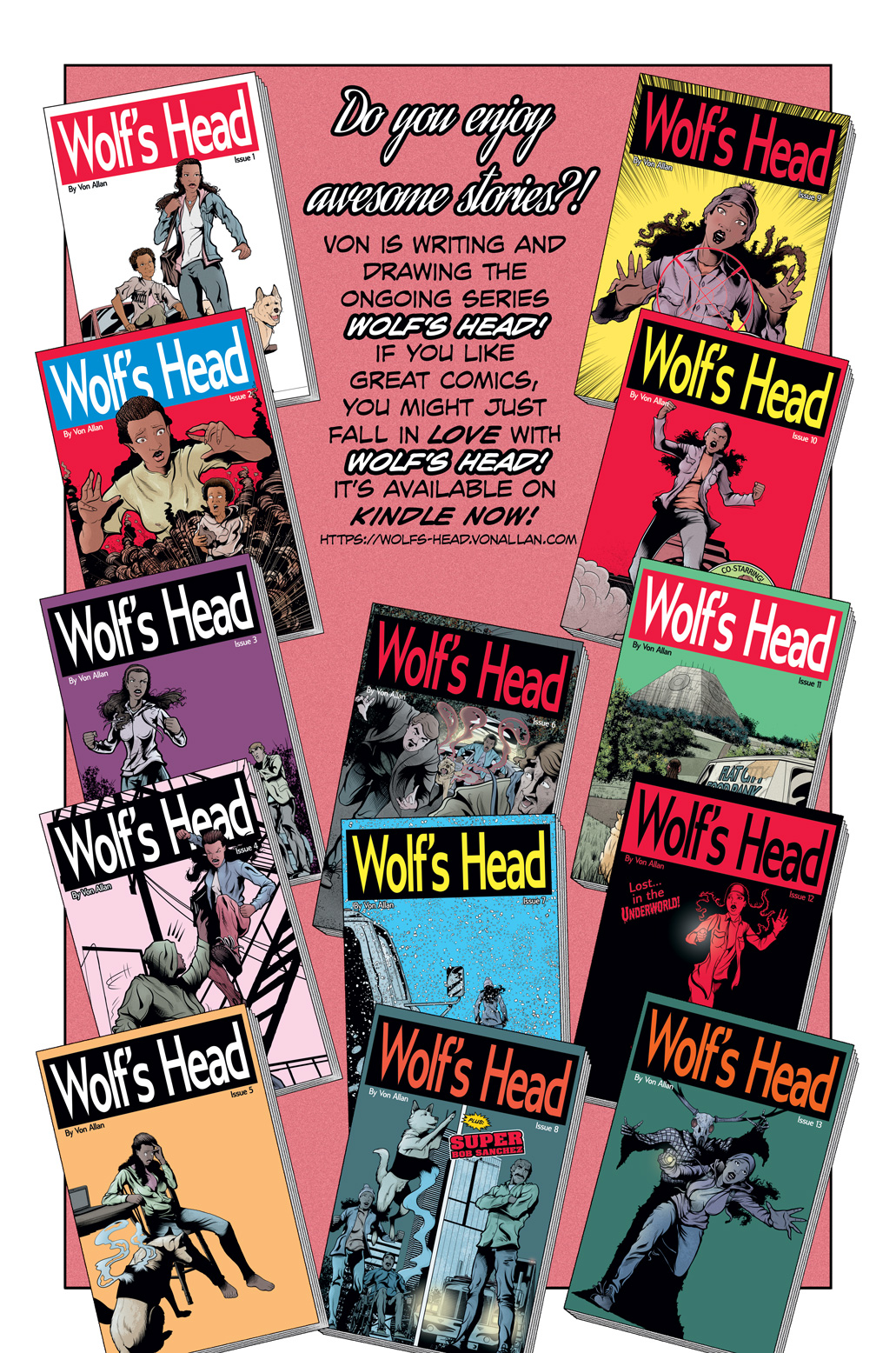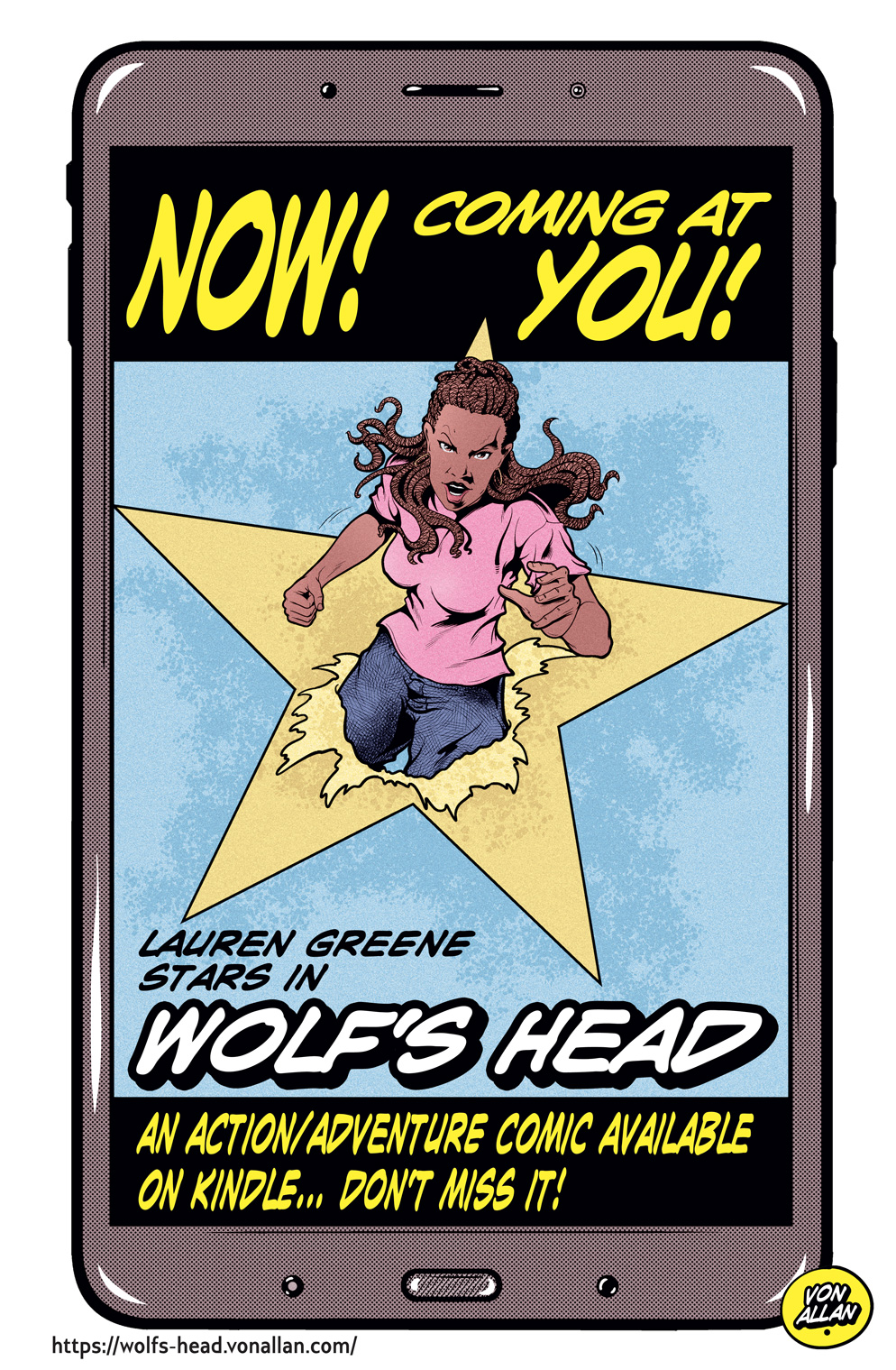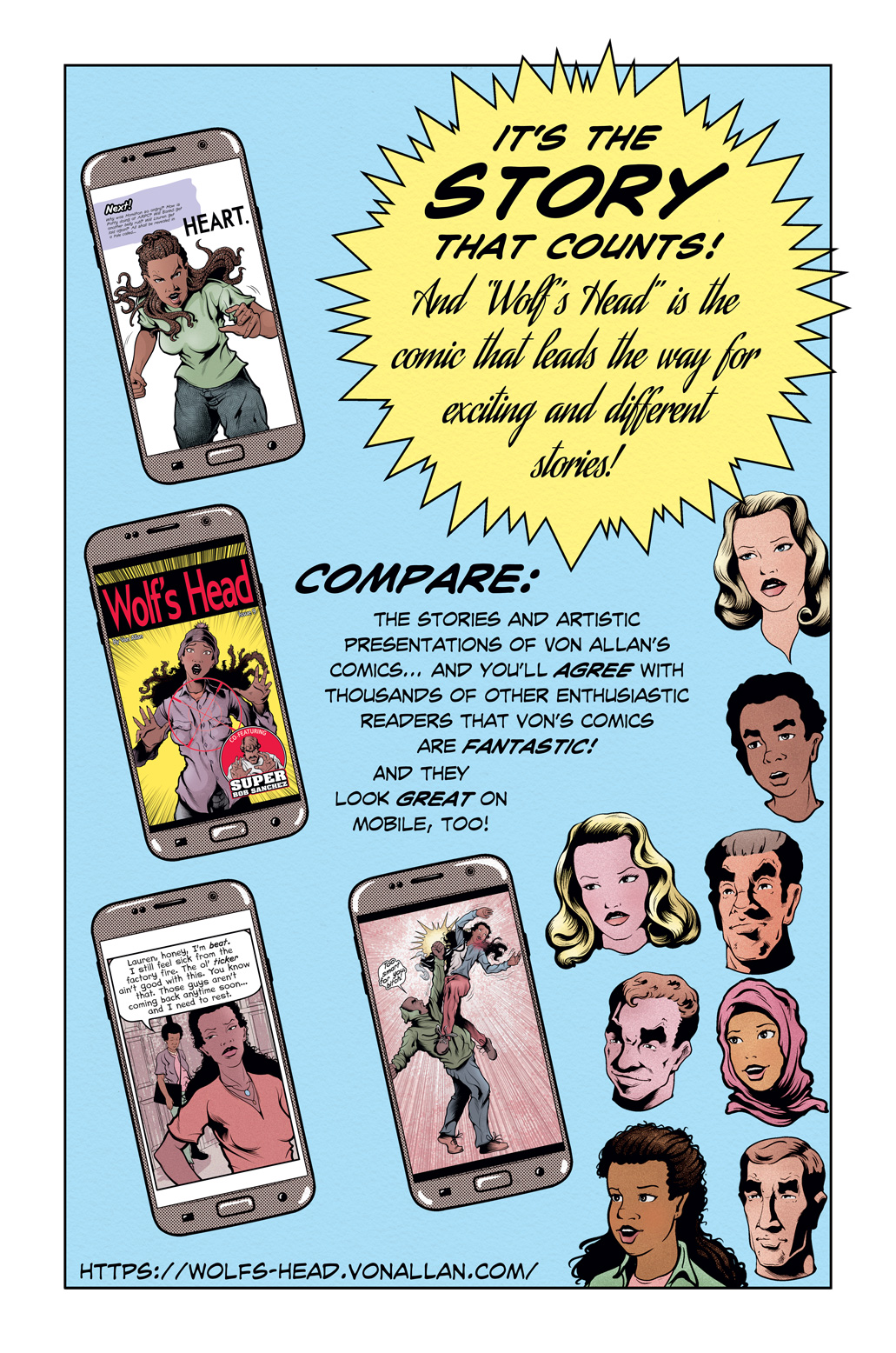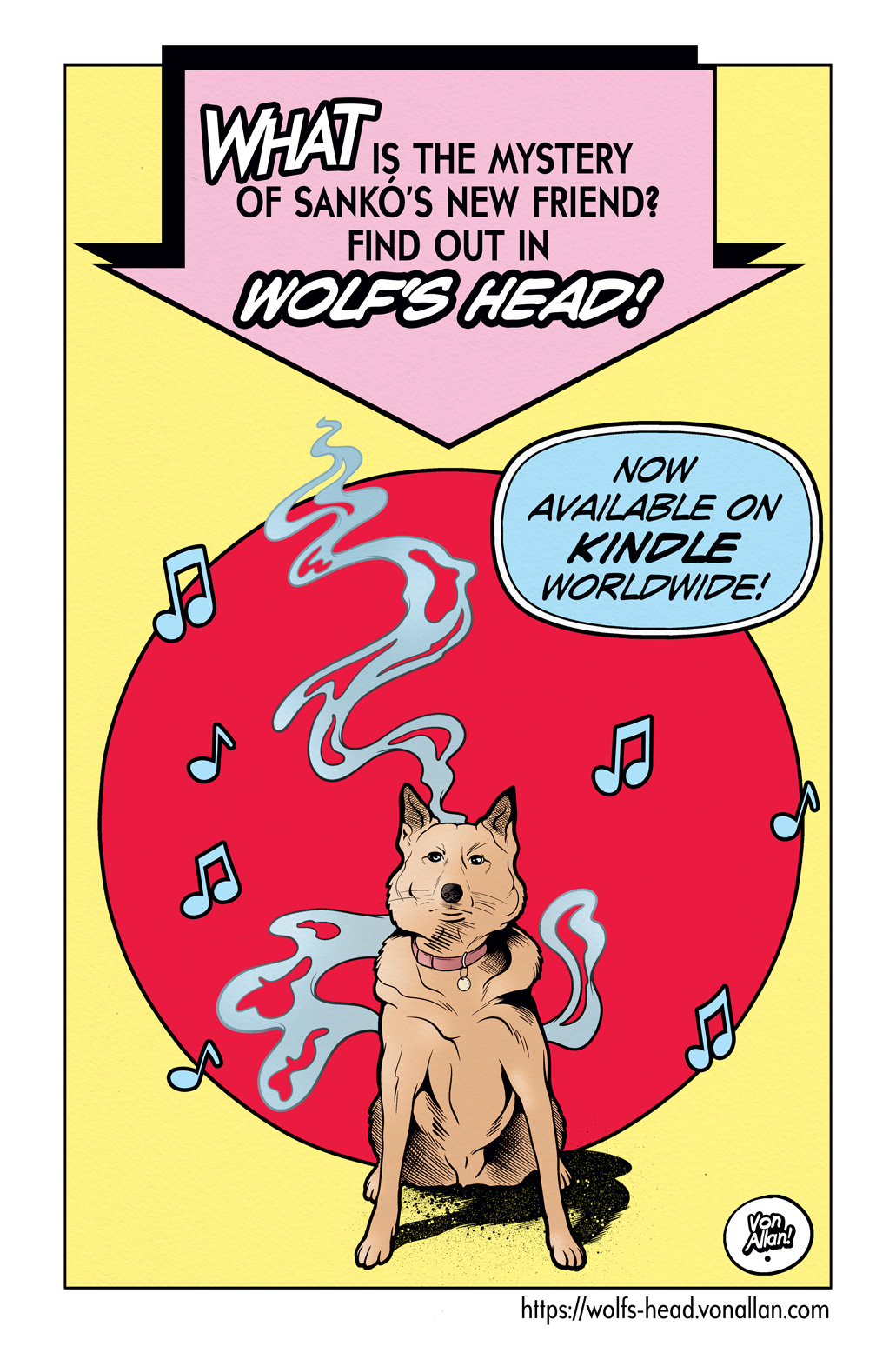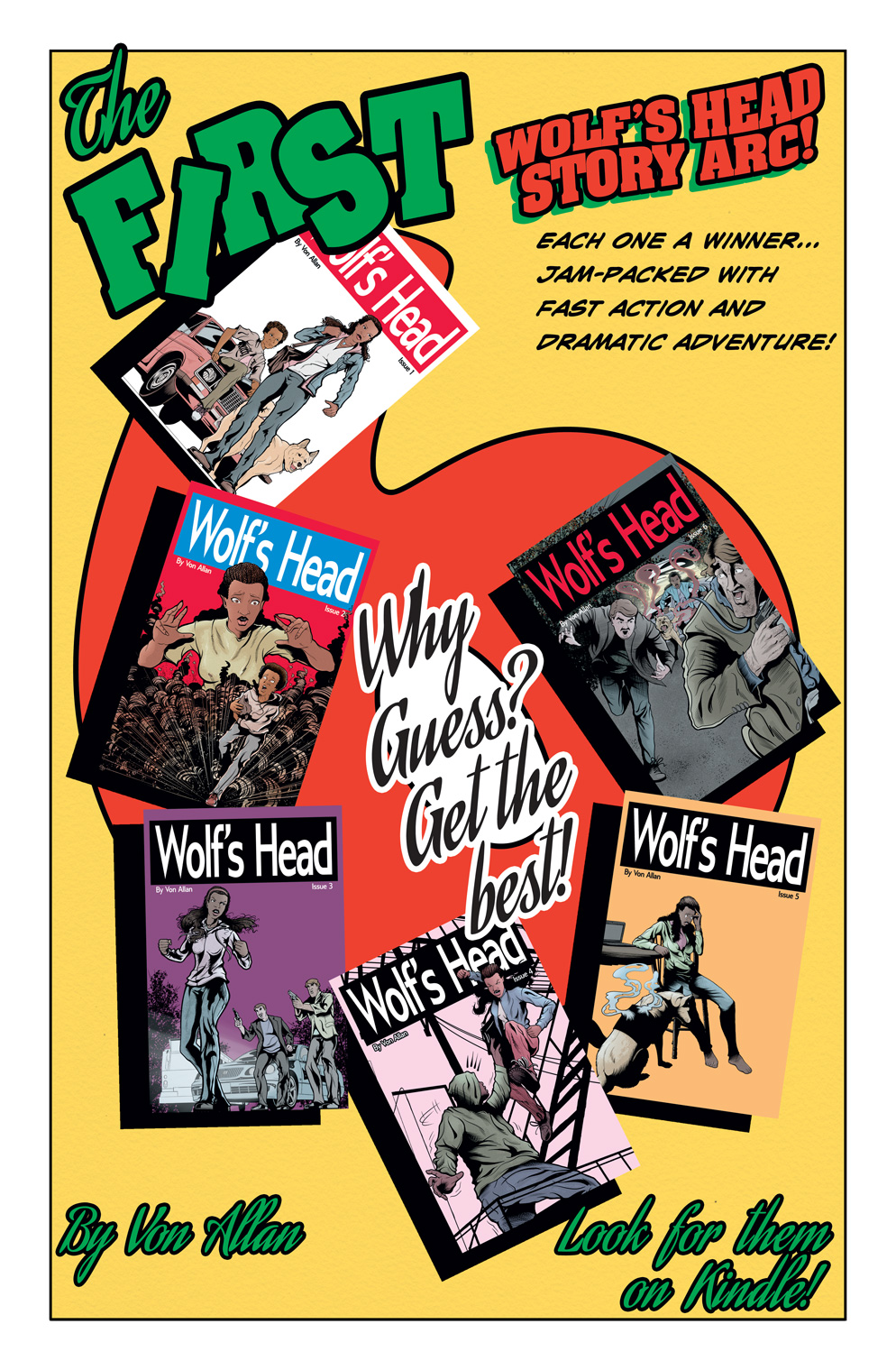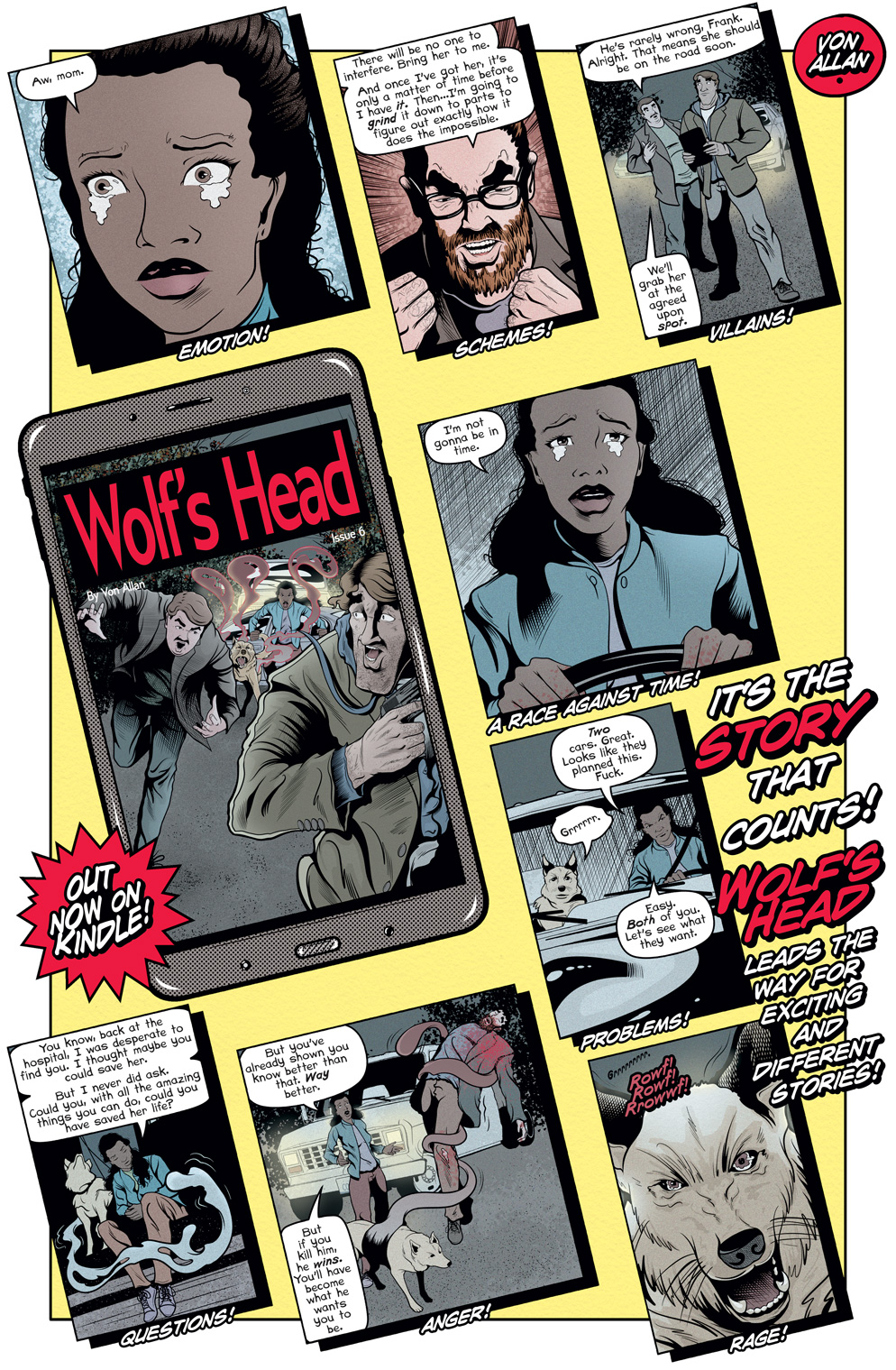The Outhouse Von Allan Interview — June 2014
Back in June 2014 I did an interview with Jude Terror, then with The Outhouse, a site well-known for its snark and sarcasm, but also for really insightful pieces (such as this terrific interview with Chris Claremont and Jude’s commentary on comic book journalism, something that Four Color Sinners has recently covered, too). For me, The Outhouse was a breath of fresh air (ahem — re-reading that does imply a certain contradiction, right?!) and I thought Jude’s work there was great. Comic book journalism, such as it is, sometimes as an air of pretentiousness that can get in the way of actually good writing. Rather than trying to explain that, I’ll use an example from the film TRADING PLACES to make my point: I do not want my journalism to be the literary equivalent of this. The Outhouse, but in particular Jude’s writing, avoiding a lot of that. That, from where I sit, was and is a very good thing. Sadly it didn’t last and The Outhouse is gone. Jude is now writing what I call “review snark” for Bleeding Cool, but I definitely miss the days of him writing at the ol’ Outhouse site. It just ain’t the same.
With that in mind, I did stumble across this old interview in my archives. And with The Outhouse long gone, I decided to resurrect it here. The context of the interview was the launch of my series METAL GODS. That series only last four issues, but a lot of what I learned was later developed into WOLF’S HEAD, albeit with a very different underlying story. As you can see in the interview, I was pretty optimistic with METAL GODS, but I was still trying to find my way, especially after I finished the graphic novel series STARGAZER. We learn by doing and METAL GODS was definitely a learning experience, the first time I had ever tried an ongoing periodical comic book series rather than a graphic novel. That created a lot of challenges that eventually became a bit too much for me at that point in my career, so I (regrettably) pulled the plug on the series. That said, I did win an award for it that came with a bit of money. That really helped on a number of fronts.
This interview is also a bit of a departure for me. Sometimes my interviews are pretty serious, but given the nature of The Outhouse and Jude’s own writing I knew that I had to step up my game. So not only was it fun to do, I cut loose a bit more than I usually do! And how many “silly” interviews also dive into everything from Karl Marx to STAR TREK?! This one sure as hell did.
I’m very pleased to resurrect this interview. Thanks to Jude for doing it with me, too.
The Interview
Jude Terror: Thanks for joining us, Von, and my sincere apologies for the career hit you’re gonna take for associating with us.
Ruined! Ruined I am! Why did I ever agree to do this? Is it because you threatened my doggie? Or my wife?
Jude Terror: One of the things about METAL GODS I found really charming was that, despite nudity and cursing and demonic possession, it still comes off as sort of… polite. Do you think that’s a uniquely Canadian quality?
Fuck no. I’m not even sure I’d call it polite. I think I’d call it compassionate. I wanted to do a story where the heroes are heroes. Not dark and angsty. Not haunted. Decent people finding themselves in extraordinary circumstances. If you fuck with them, then the gloves are gonna come off, but they aren’t going to murder, torture, or maim their opponents just because they can. In other words, this is clearly a shocking and innovative concept considering the last 20 years of increasingly violent and immoral mainstream corporate comics.
It’s weird; I’m doing a comic with influences of heavy metal, sex, violence, all that glorious shit. But at the same time, I really wanted Nick and Louella, the two protagonists, to be decent human beings. The influences for that decision come from a variety of different sources, but I can nail down a few. Gene Roddenberry’s STAR TREK is a big one. I love the humanity of both THE ORIGINAL SERIES and NEXT GENERATION, something that began to get lost after Roddenberry died (no offence to fans of VOYAGER, ENTERPRISE, and EVEN DEEP SPACE NINE (though DS9 is better in this regard), but something about Roddenberry’s vision was lost the further the various shows got from his death. Even Next Gen dropped in the Cardassians in season 4’s “The Wounded” and noted that they had been fighting a long war with the Federation, a war we never saw and which was never referred to previously. I realize that this was primarily done to set up DS9 and the “frontier” aspects that the new show was going to focus on, but it really marked a tonal shift from what had happened previously. The two recent (and godawful) movies ram this point home even further. Compare the spirit of those two movies to TREK episodes like “Spectre of the Gun,” “Errand of Mercy,” and “A Taste of Armageddon.” Or even the new STAR TREK CONTINUES fan series.
I also was thinking a lot of something Alex Toth wrote in a pin-up he did for ANYTHING GOES #1 from Fantagraphics way the hell back in the mid-80s: Toth wrote, “A toast -- to true blue, ethical, dashing, stylish, fun-loving, fair-playing, handsome, stylish (sic), sentimental, romantic HEROES of the news, histories, fables, novels, plays, movies and radio serials, and comic books of my youth -- may they once again, in spirit and substance, reclaim their popular stature and celebration! We do, sorely, need them!” I was thinking of that sentiment a lot when I was brainstorming METAL GODS.
So no, it’s not a uniquely Canadian quality or anything like that. It’s a deliberate choice to tell a story with decent human beings as the main characters. One big beef I have with a lot of contemporary pop culture is that much of this compassion has been lost. Which is not an argument that I want to back to the “good ol’ days” — far from it, especially since the good old days weren’t all that good. Rather, it’s an argument for more diversity.
Jude Terror: Your love of the Silver Age is clear in METAL GODS. Despite dealing with a somewhat dark plot and the elements I mentioned earlier, the comic comes off as the antithesis of the “grim and gritty” era that modern mainstream comics seem to have gotten stuck in sometime around 1986 and never come out of. For our readers who complain about the “grimdark” pretty much constantly, I highly recommend checking METAL GODS out. What are some of your favorite comics from that era, and how have they influenced your work?
YES! Fuck grim and gritty. I can’t believe that we’ve had almost 30 years of this shit. This boring as hell shit. It’s so tedious. Again, I don’t care about grim and gritty as long as there’s balance but I hate when it (or anything) becomes the paradigm. Then, worse, it starts to “infect” characters in ways that destroy their essence; Spider-Man willingly torturing Sandman is a good example. Superman willingly killing Zod is another. In some ways I actually feel most saddened by a character like Tony Stark; that ain’t my Iron Man. Some grim and gritty is and always has been fine; Wolvie, Batman, whatever. Obviously a character like Judge Dredd is built around that (but even then there was humour). Does everyone have to be Dredd? Does a character like Mary Marvel have to be tortured and full of rage? Is that the best that can be done? Are you fucking kidding me?
I was basically a Marvel guy for that era. I never could get into much DC stuff, though there were exceptions here and there. I was also a big fan of non-big-two books, even back then. So I was picking up Eclipse’s reprints of AXEL PRESSBUTTON (glorious!) and then the latter LASER ERASER AND PRESSBUTTON series. DNAgents, though I was never a huge fan. Dave Stevens’ truly brilliant ROCKETEER. AMERICAN FLAGG! from First. And, though it’s a tad later, I’m still a big fan of the pre-Unity VALIANT comics.
If I was going to single out some titles from Marvel, then they’d be Chris Claremont and Paul Smith’s UNCANNY X-MEN run, John Byrne’s time on ALPHA FLIGHT, Peter David’s INCREDIBLE HULK, Frank Miller’s DAREDEVIL, and Michelinie and Layton’s second run on IRON MAN. And, of course, Walt Simonson’s MIGHTY THOR. To me, those comics really brought Marvel back from a so-so 1970s era that never really floated my boat. Claremont and Smith’s X-MEN, in particular an issue like 168, are some of my favourite comics of all time. Claremont did a really nice job in that issue of having a strong single issue story (Kitty Pryde’s battle for respect with Professor X), a solid action sequence with Kitty, all the while balancing a number of subplots that continued to drive the overall arc and dealt with other characters, to boot. People can bitch and complain about some of the stylistic choices that Claremont and other writers used in that era; for instance, I’ll argue pretty hard that the use of expository captions went too far and tended to bog down the narrative. And Claremont did have an angsty tone that could grate at times. Sure. We can all nitpick almost any comic, any time. That said, these issues weren’t “written for the trade,” didn’t use so-called decompressed storytelling techniques, and any issue in this run had elements that stood on their own, giving a reader a satisfactory read, while still driving the overall story. In many senses, this type of structure has almost disappeared in contemporary “big two” comics. I think that’s a shame because I really like a lot of diversity when it comes to story structure; comics are a wonderful medium and there’s a lot of room to play with structure, especially when it comes to periodical comics. And many of these comics felt like real, permanent change was going on. Some of that, of course, was the illusion of change. At the same time, though, when Jim Shooter’s run as editor-in-chief ended with his firing, it felt that company made a concentrated effort to always return back to a status quo, something I don’t think has ever really stopped since.
I should also point out that John Byrne’s run on ALPHA FLIGHT (1-28) is also a big influence. Take the Omega Flight angle that culminated in Guardian’s “death” (sigh…) in issue 12. The initial set-up began in issue 6; the subplot sequences in issues 10 and 11 are terrific, partially because we see real change happening and, I’d argue, because we’re seeing real time elements play a big role. Again, real change and that wonderful feeling as a reader that I wanted to know “what happens next.”
DC did do some interesting work at the time and I think my favourite is probably Alan Moore and Curt Swan’s “Whatever Happened to the Man of Tomorrow?” two-parter. Damn that’s a wonderful story. And while it did tend to get a bit “wangsty,” I enjoyed some of Wolfman and Perez’s TEEN TITANS (especially “Who is Donna Troy?” and “Crossroads”). More deep change happening to characters, even though the brief revival of real change was ending; I tend to argue that one of the things that made Marvel so strong in the 1960s was the deep change that characters went through. That really contrasted with DC, but then Marvel stopped (for the most part) doing it in the 1970s, with a few exceptions (Englehart’s CAPTAIN AMERICA and Claremont’s X-MEN). There was a brief revival of change during Jim Shooter’s run as editor-in-chief (though not line-wide) and then it all stopped. So not only are we in an era of grim and gritty, but we’re also in an era where the main characters can never truly change and, the few times they do, the “reset button” is pushed. It’s basically the argument that the “illusion” of change rules the roost and it’s a shame. In other words, we’re in a world of constancy. That doesn’t mean an individual issue or arc can’t be good; rather, it means that when you step back and look at the big picture, everything always resets back to a baseline status quo. It’s SO boring.
Okay, on to influences. When it comes to the art, specifically how the story is told, the big thing for me is clarity. Comics of the silver and bronze ages really show-cased the importance of panels and especially the gutters. Panels make sense and further a story. Plus, you can look at most panels in isolation and go, “yeah, I understand what’s going on.” That approach actually requires a fair amount of discipline; drawing a cool image or sequence is important, sure, but it always get trumped by story. Of course, someone is going to interpret that as meaning that I prefer six or nine panel grids ad nauseam. Far from it and guys like Todd McFarlane and Frank Miller showed what you can do within this structure. The point is to tell the story clearly; if you can be creative with panels and structure, awesome, as long as the story is clear. I should add that it really doesn’t matter what the genre of the story is, what the tone is, if the story is fiction or non-fiction, or even if you like the story. The point is whether you can understand the story, even if you don’t like it. Does the story make sense or are you left scratching your head, trying to play detective?
On the writing side: First and foremost, these comics weren’t “written for the trade.” Some people immediately assume that means that the stories were just “done in one” and, as a consequence, nothing mattered. I’d say that’s an utter bullshit argument. The difference is that the aforementioned comics focused on telling a beginning, middle, and end story in each issue while at the same time using subplots, hooks, teasers, and other storytelling tools to draw you into a much larger world. I’d call that continuity, but that often leaves a bad taste in people’s mouths. Call it world-building, call it storytelling, call it whatever the fuck you want. I believe strongly that you can use single issues to tell strong stories, still build a larger and more nuanced world, and build up to future events that have a big payoff.
Does that mean I’m completely against a decompressed story? No, of course not. I am against it being used all the time, but decompression is one storytelling technique and there are often quite valid reasons for using it. It’s all tools in the tool box rather than hard and firm rules. I don’t believe that decompression works as an ongoing element of periodical comics, but if someone argues that the periodical is a chapter in a larger beginning, middle, and end story then I’m willing to listen. Hell, Charles Dickens used a periodical format to serialize GREAT EXPECTATIONS and A TALE OF TWO CITIES. I think that argument is stronger with creator-owned titles like SAGA then it is with corporate comics like Spider-Man. Why? With the former, you can structure the story so that there’s an overall conclusion. With corporate comics, they never end. Creators change, titles reboot, but the never-ending constancy continues. Using decompressed storytelling techniques to explore the latest battle between Spidey and Doc Ock is boring. Just get on with it.
Jude Terror: How do you find a balance in paying homage to the great comics of yesteryear without coming off as quaint or campy?
Or even old-fashioned? I think about it quite a bit, but when I get nervous I always fall back on trusting the fact that I fell in love with certain comics for a reason. And when I take ’em part to try to learn why I think they work, there’s a structure and philosophy in many of them that I like. When in doubt, those are the guideposts I use. Plus you realize that you don’t have to be all things to all readers. Some people won’t (and haven’t) liked my work and that’s just fine. Others will (and have) and that’s awesome.
You can also avoid it just by paying attention to tone. In the case of METAL GODS, it’s really fun to play with language, really fun to play with character, and really, really fun to play with sex and violence. I’ve got devil girls and weird cults and adult situations featuring grown-ups and that’s really, really different then, say, Claremont and Smith’s run on X-MEN. If someone were to point to METAL GODS and go, “look, buddy there is using fairly rigid panels and therefore it’s old-fashioned” then I say “fuck you, that’s a ridiculous argument.” Am I using a fairly rigid grid? Yup, and I’m doing it deliberately to tell a story. Does that make it campy? Nah… C’mon. I’d argue that I would be being campy if I was trying to ape both the structural techniques and the story themes. For me, I really like the structure of older comics and I wanted to see what I could do with that structure myself. I have no interest in trying to riff or even rip-off the actual stories that creators I like used. Besides, all kinds of hot current comics use structure to better tell their story, SAGA probably being the most prominent example.
Jude Terror: I can tell by your beard and leather jacket that you’re a fan of heavy metal music. What albums would you recommend someone listen to while reading METAL GODS? Only true metal please, no poseur stuff. I’ll know.
I’m a big, big fan of Power Metal. And since I like clean vocals, it means that some metal is not “my” metal. If you want the pure METAL GODS experience, there isn’t gonna be much Doom, Stoner, Black, or Death metal. Sorry, Electric Wizard fans, it ain’t happening. On the other hand, The Sword’s “Warp Riders” is a definite must. “But wait, you asshole, some people consider The Sword Stoner, right?” Meh. I like what I like.
Toss in “Bomber” and “Rock ’n Roll” by Motörhead. Rage Against the Machine’s self-titled debut album. Budgie’s “Never Turn Your Back on a Friend.” Throw in a bit of Anvil’s “Metal on Metal.”
But I’m gonna throw in some curve balls here, too. Mainly ’cuz I’m a picky son of a bitch. If you want the true METAL GODS experience, then you need to be able to break out and try some other stuff. Mad Sin’s “Burn and Rise” is a definite must; I can’t say enough about a band like Mad Sin. What, psychobilly in a metal post? YES! And I’ll push it further; mix in some Pogues and even The Tossers into that.
Seriously, though, if it’s fast, if it’s heavy, and if the vocals are fucking clean, you’re okay by me. And remember to stay the fuck away from Guns ’n Rose, Motley Crue, and the like. No hair metal bands, man.
Jude Terror: Why do you think there aren’t more comics starring metalheads? Is it discrimination?
Who the fuck knows? Publishers might be afraid that too narrow a focus might restrict the audience. There was a time that no one thought that a zombie comic would have a broad audience so I don’t put a lot of stock in it. But! I’ve actually experienced this somewhat myself just recently; I contacted one academic who basically said that since he has no interest in heavy metal, he wouldn’t have any interest in my comic. I thought that was a remarkably closed-minded answer; if you don’t like the series after you read an issue or two, I’m fine with that. But judging it without reading it? Okaaayy. Whatever, man.
I’m hoping that longevity here may turn some people around; I know I’ll never convince someone like that academic to try it, but someone who is on the fence might give it a shot when they see the series hit issues 7 or 8. We’ll see.
Do the work you believe in and hopefully the audience is going to find it. I think it’s a helluva lot better than doing a riff on some superhero.
Jude Terror: You write, draw, and ink your comics, and I assume you do the lettering too? Can you walk us through your process? Do you script out the pages, or just kinda draw from the story outline, or what?
I do it all, baby. METAL GODS has actually been a challenge for me since I’ve had to learn to make the entire process go quicker. Before, with my other work that was planned out as graphic novels, I’d write full script. Even go through a number of full drafts While that approach certainly works just fine and has a number of merits besides, it’s just way too time-consuming an approach for me with a periodical comic. On top of it, I realized how much I’d change the “final” script while I was drawing it, so the script really was a “shooting script” more than something written in stone. If I’m going to change it, then why lock it down? A dirty secret in comics, something that Howard Chaykin has noted (here and here), is that visual artists really are co-writing the comic when they collaborate with a writer. Since I am my own collaborator, I’ve evolved a way of writing that works well for me. And that way eliminated the need for a tight script.
So, the basic process now is that I write a loose outline and draw from that. I tend to put a goodly chunk of dialogue into the outline, anyway, but this allows me to firm up the pacing while still having a lot of flexibility for when I start to draw. The outline is more detailed than something like a single-page Marvel Method outline, but not so detailed that it’s rigid. My wife is actually a professional editor and the outline gives her something to work off of, too. I like getting feedback throughout the creative process so this really helps me stay focused on structure.
I should add that the outline doesn’t just pop out fully formed, either. I go through a brainstorming process before tightening up the various plot beats and whatnot. What needs to happen in this issue to drive overall story beats forward. At the same time, I find one plot that I can develop that has — you guessed it — a strong beginning, middle, and end arc that gives a reader what I hope is a satisfactory reading experience. Then I start breaking all of those plots down into various scenes, experiment with dramatic order that those scenes occur in, before finally locking the scene order down. The actual outline is based on the scene order. In other words, it’s a series of building blocks, building upon one another, before the outline is finally done.
When I switch into drawing, I’ll start loosely thumbnailing out each page and then just build up from there. I’ve experimented and continue to experiment a lot with how I approach a page, even though I always tend to work with a panel structure. I like drawing with a nub of a pencil to help get my arm moving so I currently draw layout pages larger than other artists I’ve come across. Then I scan the loose page in and start tightening it up in Manga Studio EX 4. I letter at this point since I can play around with placement, though I’ll be thinking a lot about the lettering when I’m thumbnailing and laying out the pages. Then I digitally ink the page, again in Manga Studio EX 4, and I colour it digitally in Photoshop.
I should add (again!) that there are no hard and fast rules (tools, not rules!); sometimes I’ll draw a panel much larger on a separate sheet of paper. Sometimes I’ll draw small. The only thing I’m tending to do pretty regularly now is digitally inking and digitally colouring. For the longest time I inked with a sable brush, but I found the scan and clean-up work really time-consuming and really frustrating. It also made the colouring process much slower due to how hard it was to flat out the colours. Digitally inking means I can work on different layers (contours on one layer, details on others) and that means I can set-up my colours FAR faster; there’s no fussy screwing around with hatching or whatnot because that’s all on a separate layer. Very handy.
I’ll still tweak and re-write dialogue right through the final colours, too, another reason why locking the script down early doesn’t work for me.
Jude Terror: Are people who just write or just draw pussies?
Fuck yeah! Screw those assholes!
Though this is as good a time as any to make a plea to one of my favourite writer/artists, namely Matt Wagner. MAGE: THE HERO DEFINED debuted in 1997, 13 years after the first series MAGE: THE HERO DISCOVERED started. Well, it’s been 17 years since then and we still have no MAGE: THE HERO DENIED.1 What the fuck, brother?!
Jude Terror: There’s a moment in issue #2 where one of the “bad guys,” Frank, is explaining why he wants to bring about the end of the world, and he says, “This world of ours is decayed. Broken. Have you seen Detroit? Have you seen Cleveland? Camden?” All of those are American cities. Don’t you have any dilapidated hellholes in Canada you could pick on? If not, would you say it’s because of your socialist healthcare system?
Canada is a place of glory, joy, and is also a living embodiment of the light on the hill. We’re Camelot, baby.
Well, okay, maybe not. And yup, we do have many, many problems. Austerity is everywhere, ordinary people struggle, and we’re not doing well on poverty. There’s a major fight to increase Ontario’s minimum wage to $14 dollars per hour. There’s a piece up at Dissent Magazine that serves as a good overview.
That said, it’s really hard to compare any Canadian city to what’s happening in, say, the rust belt cities in the States. Downtown East-Side Vancouver ain’t much fun. Toronto has had its fair share of inner city violence. Not to mention a boatload of police-initiated violence (the 2010 G20, anyone?). Still… Detroit being urged to bulldoze 40,000 buildings is remarkable. 40,000 buildings. I can’t get my mind around that. And now we’re seeing the city start turning off water to some of its residents. Unbelievable.
Which is not to say things are all red and rosy in a country like Canada; they ain’t. We just had an election here in Ontario that was a joke. That said, the reality is that things like health care are key planks in making life livable for many people. Canadians and Americans have a lot in common; we speak the same language, we have many shared experiences, and we have a lot of culture in common. That said, the differences are still pretty stark and one of them is, of course, health care. What can I say? I think health care is a right. Period. Full stop. I think that the cry in the States should not have been Obamacare but Medicare for All. And while I think our health care system, which does have flaws, can and should be better, I would not trade what we have for the US system. Our health care system is much better for ordinary people. Tommy Douglas, the father of Canada’s health care system, said it best, “I felt that no boy should have to depend either for his leg or his life upon the ability of his parents to raise enough money to bring a first-class surgeon to his bedside.”
Jude Terror: One of your protagonists, Lou, is a black woman. Is it more difficult, as a white guy (and, to make matters worse, from the Great “White” North), to write a minority character?
Nah. My goal is to write good characters. I just try to write the best characters I can and hope readers connect with them, believe in them, and learn to love ’em. White, black, male, female, young, old, whatever.
Jude Terror: METAL GODS is a fully digital comic. What are people’s options for reading it? Any plans for a DRM-free version? And why do you want to destroy print comics? (feel free to talk about the industry and the impact of digital comics in general here, I love that stuff)
Right now, people can read METAL GODS via comiXology (through their indy-friendly Submit program) for 99 cents an issue. The first two issues are out now and easy to get through them. But the series is not exclusive to them; if you don’t mind the PDF format, there a lot of ebook retailers who are also carrying it. And the series is priced deliberately cheaply; 99 cents US per issue. And you can read it on a laptop, desktop, tablet, or (using comiXology’s nifty Guided View technology), through your iPhone.
I would love to do DRM-free versions, but I’m still working out the easiest way to do it. Direct downloads via some shopping cart vendor? Pay what you want models? Donation driven? Personally, I hate DRM but there doesn’t seem to be a popular DRM-free platform for comics. I’m watching what Brian K. Vaughan and Marcos Martin are doing with THE PRIVATE EYE, but I certainly don’t have that profile or pull. I also paid attention to various attempts to try free distribution; MISERY DEPOT by Hermes Pique and Juan Romera is a good example of a free comic that did seem to get a lot of readers trying it out, but it didn’t seem to lead anywhere, at least as far as I know. This is actually something I’d love to get feedback on and have a discussion about; how do lesser-known creators get their work known, earn enough to live on, and build an audience?
We’re
in a really weird space with digital. On the one hand, digital comics
have clearly not harmed brick and mortar stores directly. There is
something that will always be cool about a physical comic or graphic
novel and digital doesn’t change that. In fact, I think digital
helps create an audience for a physical version of a comic and that’s
actually a really great thing. I’ve worked with Diamond and I’ve
had physical comics distributed into the direct market and it is a
fight to build awareness, connections with retailers, and everything
everyone probably knows pretty well by now. Obscurity is the enemy.
Always.
On the other hand, we’ve seen a lot of damage
to brick and mortar bookstores by competition from Amazon. Comic shop
retailers have what I think is a natural concern that now that Amazon
has purchased comiXology, a lot of key consumer data is now theirs.
They could, conceivably, use that data to begin a targeted outreach
campaign to digital comic book fans. Right now the direct market
exists in a really unique space; could Amazon offer dirt cheap
subscription offers for digital comics down the road? Could they do
the same thing for periodical comics? What if they decided to go
balls to the wall and go after that Wednesday customer base with a
really spiffy subscription model for actual physical comics? They did
similar things to books. If that happened, direct market stores would
be in one heckuva fight. We’ve been living in a one
distributor world for quite some time, but this type of stability
is typically an illusion, even if it’s relatively long lived. While
I doubt we would go back to the multiple distributor world we saw in,
say, 1983, market disruption in and of itself is not outside the
realm of possibility. Who knows.
Jude Terror: METAL GODS isn’t your first published work. You also have an all ages graphic novel series called STARGAZER. What’s that about?
STARGAZER is an all-ages story that also featured kids, three girls, as the main protagonists. The plot in a pitch is this: Marni’s grandmother died. And as she and her parents are going through the funeral, Marni discovers that her grandmother left her this really weird object. Shortly after, she and two friends are playing around with that object and they find themselves reported somewhere else. Where they are, how did they get there, how do they get home, is the main arc of the story. Mixed with that is the fact that Marni keeps seeing something she thinks is her grandmother. The mystery of who and what that is eventually leads her to make a very bad choice, partially due to her age, with horrible consequences.
Y’know, there is a lot of understandable contemporary discussion about gender issues with comics. That’s, sadly, also not new and shows like TVOntario’s “Prisoners of Gravity” were trying to get a handle on this 25 years ago. We, both creators and readers, want to see more diversity in the stories that we read. More diversity in characters. STARGAZER was my attempt to try and tackle that. No boys at all. Three girls rather than just one, so I could play around with different traits and expectations.
The problem wasn’t that people read it, didn’t like it, and it died. The problem was that I couldn’t get many people to try it in the first place. Which is not to say I didn’t make a boatload of mistakes. I did. Doing a black and white comic for kids was not smart. Breaking the story into two volumes wasn’t smart. That said, it’s always frustrating to hear a lot and read a lot about folks crying for more diversity and then when you present a work that tries to change it, people won’t try it. The mistakes I just mentioned didn’t help my cause and being an indy and small press didn’t help, either. Oh, well. As Beckett said, “Fail. Try again. Fail again. Fail better.” And I’m still proud of STARGAZER; I’m proud of the story, the heart, the humanity, and the magic in it. I hope it comes into its own one day and, who knows, anything could happen. The people who got their hands on it, loved it; in fact, it actually got the single best review I’ve ever had of any of my work. Seriously.
Jude Terror: Do you think comics will ever be as popular with kids as they once were? How can we get more kids into comics?
First and foremost, you gotta get comics into places where kids go. I don’t know where that is, but anywhere kids congregate should have comics. Good comics at good price points. Kids love comics. Shit, my wife and I give out comics at Halloween along with candy! And there’s a total audience for it; we actually have kids seek us out for comics on Halloween! But expecting kids to somehow find themselves at a comic shop…? I don’t think that’s been proven to work. And hey, I know some stores try hard and have awesome kid and all-ages sections. If we’re talking about comics that kids want to read as some type of mass movement like the old days, then even if every comic shop had a rocking kid section, it wouldn’t matter. There’s not enough direct market venues.
Go to where the kids are and hook ’em on good comics.
Jude Terror: Your first graphic novel, THE ROAD TO GOD KNOWS…, got a lot of press back in the aughts. An arch nemesis of ours, former Marvel PR guru Arune Singh, interviewed you for CBR about it. Is that still available? Can you tell our readers a little bit about it?
If
STARGAZER was raw, then ROAD is very raw. It’s a story about a teen
girl’s struggle with her mom’s mental illness, specifically
schizophrenia, and how she learns that despite the love she has for
her mom, she can’t solve those problems for her. So it’s a coming
of age story with mental illness as a backdrop. It’s my most
personal work, but it’s also the roughest
since I was still very new to writing and drawing. That said, it
got some very positive reviews, including one from The Library
Journal and another from the American Library Association’s
Booklist Online. Not bad for a self-published black and white graphic
novel. And it’s still available to this day.2
Some stores still have copies and it’s available on places like
Amazon or through your local independent bookseller or comic book
shop, too. Same goes for STARGAZER. The links are all off my main
shop page.
Y’know, I barely remember talking with Arune Singh, though. Ah, those were the days, when CBR would actually talk with me.
Jude Terror: You won an award this past week, the Corel Endowment Fund for the Arts Award. What would you consider a bigger honor: that, or being featured on The Outhouse?
The Outhouse, of course. But if Peter Honeywell from the Council for the Arts in Ottawa is reading this, then it’s the Corel Award. Of course!
Jude Terror: When you’re not writing or drawing, what are you reading these days?
Oh, man, so many things. I’m slowly working my way through Karl Marx’s CAPITAL3 but it is a slog. Richard Wolff’s work is another big hook for me right now. His book CLASS THEORY AND HISTORY: CAPITALISM AND COMMUNISM IN THE USSR (co-written with the late Stephen Resnick) is fascinating, primarily because of the way it challenges the reader with what so-called Soviet “communism” was and how it functioned. It, too, is a slog, but it’s a good slog and it’s certainly opened my eyes to a number of things. I love learning and I try to keep an open mind about what I’m learning.
One of my favourite things about Wolff, drawn from Marx, is that capitalism is a method of organizing production. How you distribute the goods and services as a result of that production is a very different question. In other words, workers can own and run their own enterprise, free of exploitation and far more democratic, but still participate in a free market as one way (but not the only way) of distributing goods and services. That insight creates a lot of fascinating implications; for instance, workers could own their own enterprises and not commodify the goods and services they produce. Or a number of worker owned and controlled enterprises could compete with one another in a market-based distribution system. This type of worker control also does not say one word about the government; one of the most fascinating ideas presented by Wolff and Resnick, though they’re not alone, is that the Soviet Union was organized on a state capitalist basis (because the state, not workers, controlled production). This is also a major critique in some Anarchist literature (for example, Voline’s THE UNKNOWN REVOLUTION).
It also means, and I think this is important, that while a workplace could be free of exploitation (in the Marxian sense), it does not mean that the workplace is necessarily free of discrimination. In other words, one hundred workers could own their own company and serve as their own board of directors. They could distribute the goods they produce in a market or not. But if, say, 55 of those workers are white, straight, young, and male, it’s very easy to see that the workplace could have major problems if those 55 vote on issues as a block. Especially if the other 45 workers are, for example, a mix of women, Hispanic, black, gay, and/or old workers. On top of it, how the actual jobs are organized is another key question as other voting blocks could arise (workers who do “creative work” versus workers who don’t). In fact, this is something that Michael Albert has talked about in regards to actual examples of real life worker control.
This may shock people who haven’t read much on this or come in with massive preconceptions, but Marx was a critic of capitalism. He only gestured, at least as far as I know, at what a new, different, better society would look like. And he was long dead before 20th century revolutions in Russia and China occurred. The Marxian notion of surplus and the critique that those who produce it should have a say in how it’s appropriated and distributed is really neat. That notion of class and class struggle is intriguing; we classify people by how they relate to the surplus. That we could have a far more democratic society is also really cool. How we practically do that is going to take a lot of experimentation and trial and error. That’s exciting to me.
What else? Well, I’ve been working through Bill Walsh’s FINDING THE WINNING EDGE, a terrific look at how he built up the San Francisco 49ers as an organization. It’s unfortunately laid out in awful font that makes it far more tiresome to read than it should be, but such is life. I’m also re-reading a lot of Harry Harrison’s STAINLESS STEEL RAT series, something I do every couple of years.
The only thing I don’t often read now is long-form fiction. I used to, but that’s really faded as I swing into more non-fiction or novellas.
Jude Terror: What’s next for METAL GODS? Is this a finite story? What can we expect in the upcoming issues?
Nope, it’s not a finite story, though I do have a strong initial arc that I want to explore. If there’s an audience, it would be awesome to be able to do it for a long time. That’s actually something I’m hoping for because I think seeing characters change and grow over time is one of the things that periodical comics can do very well. It’s the real time notion again; I love seeing deep change happen in stories. Stories that feature constancy don’t interest me.
What do I want to get into with the series? A big one is class. That’s something I don’t see tackled in comics much (at all?) and it would be really interesting to explore that. Nick and Lou are going to head down to the States at some point and be able to directly experience some of what austerity has wrought. We’ll see more of what the antagonists are trying to do and why some of them have extraordinary abilities. And we’ll be exploring character; who Nick and Lou are, how they got together, and how and why they stick with one another.
Holy crap, we’re going to have fun!
Jude Terror: Thanks a lot for tolerating my nonsense. Any last words you want to leave our readers with?
Find and read good comics, not just comics from “the big two” and not just comics from creators you know. Try new things out all the time. Tell your retailer that you want to see more diversity on the stands and then support that diversity with your wallet. Share the love you have for comics you like. The biggest enemy to lesser-known creators is obscurity. Find titles you love and champion them. Tell your friends. Share the love.
Jude Terror: Please also let me know what links you want to plug in there and at the end. :)
https://web.archive.org/web/20140822222924/http://metal-gods.vonallan.com/
https://web.archive.org/web/20170718191621/https://www.comixology.com/Metal-Gods/comics-series/20279
Thanks!
Footnotes
2 Sadly, it did go out of print for reasons that didn’t have anything to do with the book itself, but because of a documentary film I became involved in. More details here.
3 At the time I was reading the Penguin version of CAPITAL. I wish the new Princeton University Press version had been available at that time.

